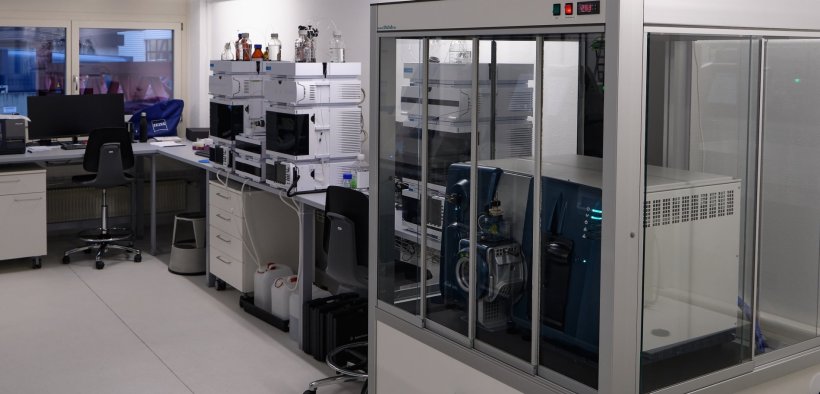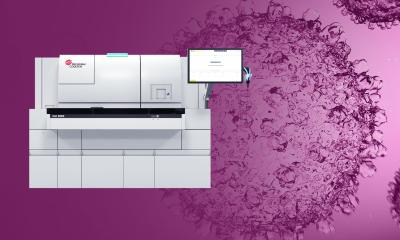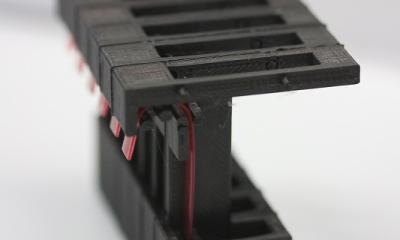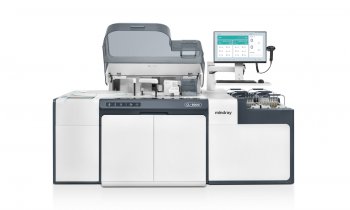
Image source: Dr Christoph Seger
Article • Standardisation in drug monitoring
How traceability eliminates lab-to-lab variability
The advantages and limitations of the value of traceability chains in therapeutic drug monitoring will be explored during a key session at the EuroMedLab event. In his presentation “Traceability chains in Therapeutic drug monitoring: scope, limitations and state of the art,” thought leader Dr Christoph Seger will highlight how measurement traceability is a critical component of laboratory measurement in the way it facilitates interchangeability.
Report: Mark Nicholls

Speaking ahead of the conference in Munich from April 10-14, Dr Seger said: ‘Measurement traceability is a key element of global laboratory medicine. It means that once measurement traceability to the highest metrological order is achieved, all participating routine measurement services will produce results which are interchangeable.’ Of course, such results are not “identical” in the sense that they have the same numerical value, since stochastic measurement errors – or measurement uncertainty – will lead to numerical different results. However, any measurement deviations due to errors in standardisation, he added, are “levered out.”
A lot of ground to cover in TDM
Dr Seger, who is CMO of the new laboratory “Labordiagnostic St. Gallen West AG” in St Gallen, Switzerland, explained that measurement traceability has been established for many key biomarkers in recent years. To foster this undertaking, the JCTLM (Joint Committee for Traceability in Laboratory Medicine) has been established by the IFCC (International Federation of Clinical Chemistry) and the BIPM (Bureau International des Poids et Measures).
Traceability efforts have produced global standards for a range of measurands, such as electrolytes, liver enzymes, creatinine as key parameter for kidney function, glucose and glycosylated haemoglobin in the diagnosis and treatment of diabetes, and thyroid hormones. Coverage of therapeutic drug monitoring (TDM) is less comprehensive so far, with standardised materials and methods available only for digoxin, digitoxin and theophylline. This is a far cry from the 200+ drugs addressed in routine TDM which, Dr Seger says is a prerequisite for successful pharmacotherapy. Drug classes include anti-infective drugs, immunosuppressants, cardiac drugs, and medication utilised in neuro- and psychopharmacology, such as antiepileptics.
Mass spectrometry and immunoassays
The major limitation of measurement traceability is that at the highest metrological level, the measurand must be defined and must not be changed in the whole traceability procedure
Christoph Seger
Discussing the scope of traceability chains in TDM, Dr Seger – who is chair of the IFCC work group on immunosuppressive drugs (WG-ID) – will detail on techniques used in measurement platforms, such as liquid chromatography with tandem mass spectrometry (LC-MS/MS) or ligand binding assays (immunoassays). These are used in the TDM of immunosuppressant drugs (ISDs) such as cyclosporine A, tacrolimus, sirolimus, and everolimus. As their therapeutic window is quite narrow, traceability holds particular relevance.
Both LC-MS/MS and immunoassays are utilised in clinical routine ISD-TDM and the limitations of the applied methods are well understood. However, the expert said: ‘The major limitation of measurement traceability is that at the highest metrological level, the measurand must be defined and must not be changed in the whole traceability procedure. This is an easy task if small molecules are targeted since any well-characterised organic molecule is associated with a unique CAS (chemical abstracts service) number and can be identified by its structure and its molecular weight.’ Things get trickier, however, when measurement extends beyond the target molecules – as soon as their metabolites are included, measurement results are biased due to cross-reactivity.
High hopes for qNMR
In LC-MS/MS, these limitations have been overcome for ISDs, but in assay realisations relying on the (immunological) fit of a diagnostic antibody with the drug molecule, such effects are still present. ‘Hence it will be methodologically challenging to fit all routine methods into the traceability chain concept,’ said Dr Seger.
Another key development in traceability includes the characterisation of “primary reference materials”, which he suggests is currently undergoing a revolution. ‘Quantitative nuclear magnetic resonance (qNMR) spectroscopy is replacing the “mass balance approach”, which served as purity assessment method package over the past decades,’ he said. ‘With qNMR, only one type of measurement is needed, which means a dramatic reduction in measurement time and a straightforward calculation of the errors associated with this undertaking.’
In future, another aspiration is for the establishment of well-validated IVD industry-based LC-MS/MS reference methods for a multitude of TDM parameters. As analytical challenges of modern laboratory medicine are being exceeded at present, Dr Seger said such IVD industry-based methods ‘may be the highest available order of traceability for years to come.’
*EuroMedLab2021 (held in 2022) is the 24th IFCC-EFLM European Congress of Clinical Chemistry and Laboratory Medicine and the National Congress of the German Society of Clinical Chemistry and Laboratory Medicine.
*Traceability chains in Therapeutic drug monitoring: scope, limitations and state of the art by Dr Christoph Seger is on Wednesday, April 13, (10:30-12:30 Symposium 17, Room 14a, and also features discussions on standardisation of bone markers, faecal immuno-testing, and in glucose monitoring.
Profile:
Dr Christoph Seger is CMO and FAMH Specialist in Laboratory Medicine at Labordiagnostic St. Gallen West AG, St. Gallen, Switzerland. Previously, he was CMO Officer Clinical Chemistry at the Risch Laboratory Group / LMZ Dr Risch, Buchs, Switzerland. He has almost 150 publications listed at Web of Science. His research interests include method development for clinical diagnostics, mass spectrometry, and NMR spectroscopy.
07.04.2022











